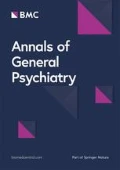The cercle of Falret's Follie Circulaire was constituted by a period of mania, one of melancholia and by an intervalle lucide. Subsequently, circular mood disorders have been the focus of increasing attention and research, but the issue of a possible intrinsic link between the phases of the manic-depressive cycle has never been investigated. The general assumption is that mania and depression are manifestations of two different phases of the same process without questioning whether one of the phases gives rise to the other.
Evidence will be presented suggesting the existence of an intrinsic link between mania and depression; the excitatory processes of mania or hypomania being the primary neurophysiological event and the depression being consequent. The different outcomes according to cycle pattern and data from lithium discontinuation support this idea. Furthermore, all the pharmacological agents used in the prophylaxis of affective disorders have a proven antimanic and prophylactic effect against both mania and depression, while there is little unequivocal support for a direct antidepressant action. Much of the confusion regarding whether or not lithium, antiepileptics and atypical antipsychotics possess antidepressant properties probably arises out of their efficacy in mixed depressive states.
A possible explanation for such a causal relationship between mania and depression could be that excitatory processes are harmful to the nervous system while depression is the psychic expression of this impairment and a period of reparation.
A better approach to prophylaxis should be to prevent the emergence of excitation of any kind, and, if excitation has already risen, to suppress it as soon as possible and to avoid, to the extent possible, the use of antidepressants. The concept of the hypomanic equivalent is introduced.
Author information
Authors and Affiliations
Rights and permissions
Open Access This article is published under license to BioMed Central Ltd. This is an Open Access article is distributed under the terms of the Creative Commons Attribution 2.0 International License (https://creativecommons.org/licenses/by/2.0), which permits unrestricted use, distribution, and reproduction in any medium, provided the original work is properly cited.
About this article
Cite this article
Koukopoulos, A. The primacy of mania. Ann Gen Psychiatry 5 (Suppl 1), S5 (2006). https://doi.org/10.1186/1744-859X-5-S1-S5
Published:
DOI: https://doi.org/10.1186/1744-859X-5-S1-S5

